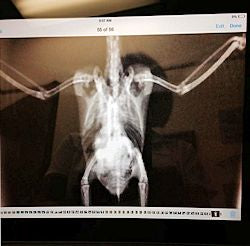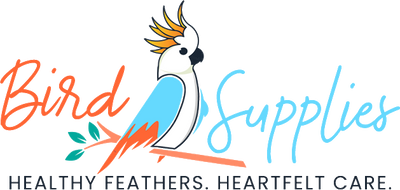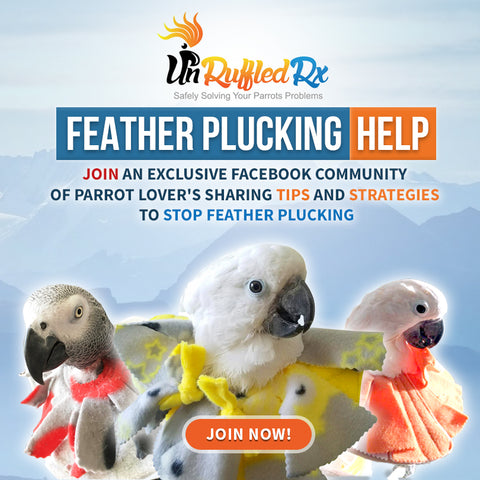
Parrot Anatomy 101
General Appearance
Make it a habit to observe your bird closely every day. This can become part of your daily routine, preferably done before you leave for work in the morning. Handle your bird and talk to her softly while you quickly examine her from her head to her toes to make sure she is okay.
1. Are her eyes bright and clear?
2. Does she greet you in her usual manner?
3. Is there any discharge around the nares or eyes
4. Is the beak in good shape?
5. Is your bird looking fluffed?
6. Has your bird been normally perching and climbing about the cage?
7. Does your bird appear to be favoring a leg or wing?
8. Is there any blood anywhere around or in the cage?
9. Are any toes red or swollen?
10. Do her droppings look unusual?
Changes in any of the above areas could mean that your bird is sick. Make sure to have your avian veterinarians number handy, a stocked Bird First Aid Kit and a Bird Hospital Cage available at all times. Here is a handy list of how to tell if your bird needs to see a vet immediately or if an illness or injury can wait.

Beak
Your birds beak is used for eating, preening, climbing and getting around the cage. Check the beak every day as it may be an indication that something is wrong. Your bird can break its beak if it falls and other birds may bite the beak. Beaks that are discolored, cracked or overgrown affect your birds daily activities and need prompt attention. Provide bird toys to help your parrot self-groom it’s beak. A Sandy Perch is specifically made to help your parrot safely grind its beak and nails. If your birds beak appears to be growing unevenly or overly fast, consult your avian veterinarian.
Eyes
A sick bird shows it in her eyes. If your bird looks forlorn or despondent, something is very wrong. Observe the eyes for cloudiness, squinting, discharge, redness or any other issues. These issues may be an indication of a Vitamin A deficiency or an infection. Consult your avian vet immediately. Prevention is the best medicine. Convert your bird from seeds to a well-balanced pellet diet such as Harrison’s Bird Food supplemented with fresh vegetables daily.
Feather Condition
The appearance of your birds feathering is an important clue of its overall health. Tattered dull feathers, bald spots, misshapen feathers and unusual coloring are indications of malnutrition. Too much preening that results in broken feathers or baldness as well as lack of desire to keep feathers clean are both indications of nutritional issues, parasites or other problems. Your vet can get to the root of the problem with some simple, in office examinations and tests. Prevention involved a healthy, well-balanced diet, as described above plus bathing your bird several times a week to remove dirt, dander, skin flakes and oils. Bathing also moisturizes the skin. Many avian vets recommend UnRuffledRx Aloe Vera Spray to condition the skin.
Legs and Feet
Birds are on their feet 24/7. They’ve got many more toe joints than you or I and those joints need to be stretched and worked for proper foot health. You can help you bird by throwing out all dowel perches and replacing them with a variety of natural wood perches which feature variable diameters across the length. Some of our best-selling natural wood perches are the Java Perch, Hardwood Perches and Sandy Perches. A rope perch or bungee provides a soft area when your bird feels pressure on its feet. If your bird appears to be favoring a leg or foot, you observe swelling, or the feet are flaky or the pads of its feet are red or scraped up, you’ll want to get your bird to the vet. Keep toe nails properly groomed with conditioning nail perches.
Tongue
Get to know what a normal bird tongue looks like. It should be dry looking and a shade of pink or gray or both, depending on the species. Swelling or discharge on the tongue may indicate an illness, such as hypovitaminosis A, granulomas, papillomas, or an infection. You’ll want to make sure that your bird has fresh, clean food and water at all times. We change our birds water twice a day and more frequently in the summer when food particles in water grow nasty bacteria. Keep cage bars clean as your bird uses its beak to climb up and down cages. We prefer to use AviClean Concentrate to wipe cage bars, food areas and perches each week.


